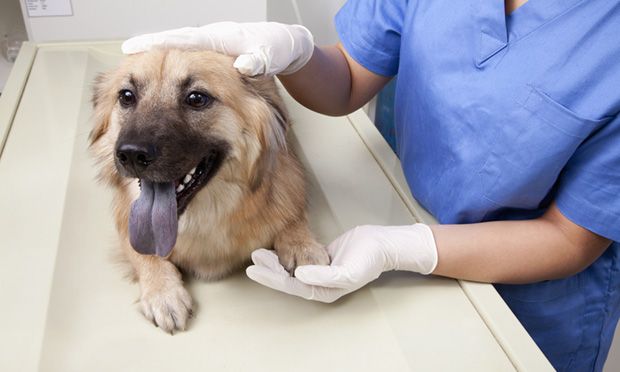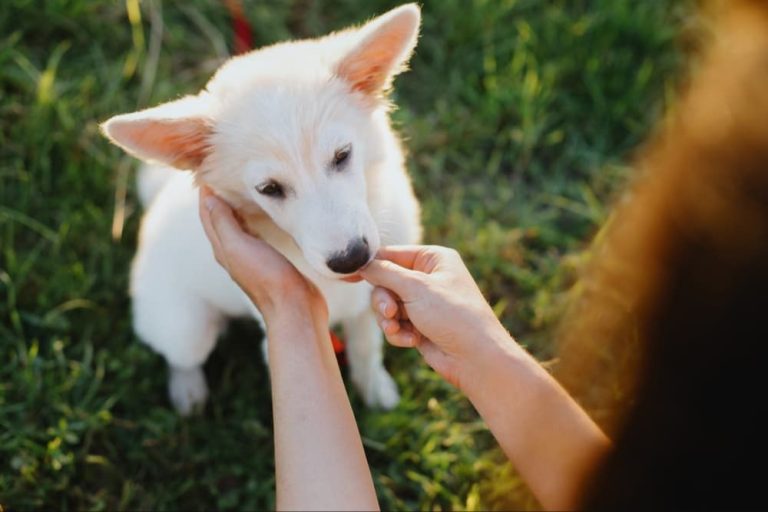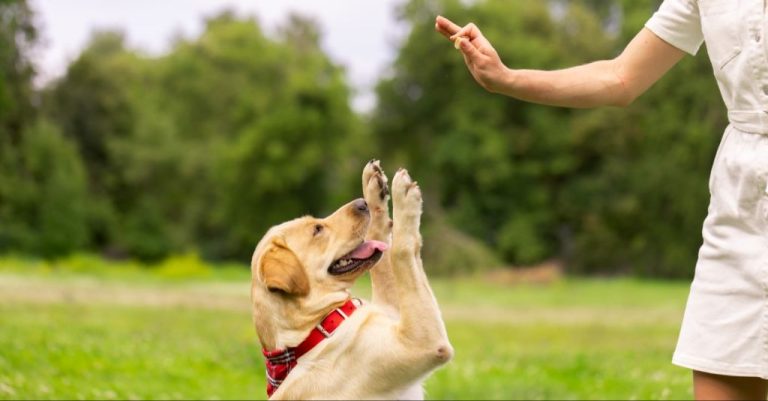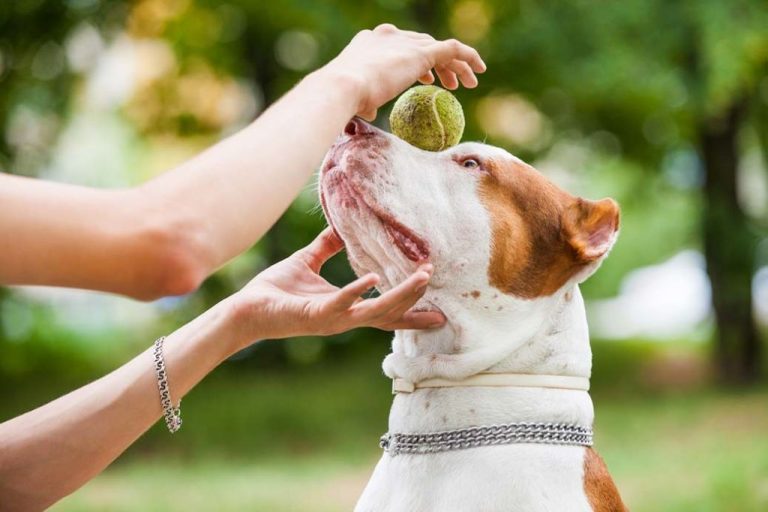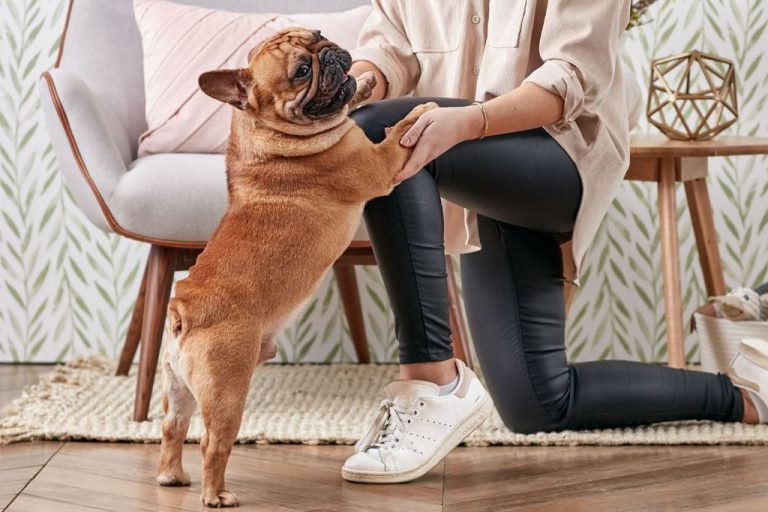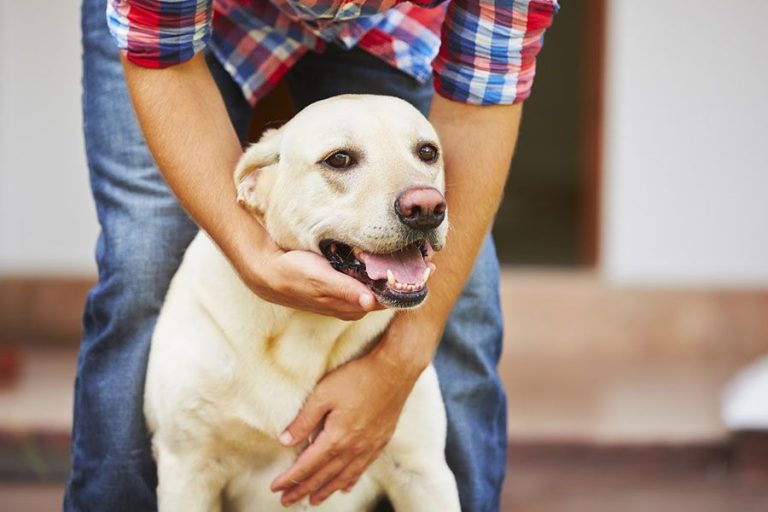Housebreaking 101: Tips For Potty Training Your Dog
Set Up a Routine
Establishing a routine is one of the most important parts of successfully house training a puppy. Puppies do best on a predictable schedule. According to the AKC, you should establish a regular feeding schedule, such as feeding your puppy 2-3 times per day.
You’ll also want to develop a predictable potty schedule. Take your puppy outside frequently and consistently, such as every 2 hours for young puppies. The key is consistency so your puppy learns to expect potty breaks at certain times.
Always praise and reward your puppy for going potty outside. This positive reinforcement will help them learn where it’s appropriate to relieve themselves. Limit your puppy’s access to the house when unsupervised so you can prevent indoor accidents.
Choose a Potty Spot
Pick an easy to access potty spot right outside your door. This spot should be in a quiet area without too many distractions for your puppy. Always take your dog to this same spot every time and use a command like “go potty” as you walk with them (1). The key is consistency – you want your puppy to associate that specific area with going to the bathroom.
Choose a spot with soil or grass. Pups may get distracted by or prefer certain textures while potty training, so keep that in mind. If you live in an apartment, you may need to designate an indoor potty spot as well using potty training pads or fake grass (2).
Having one or two consistent potty spots will help your puppy remember where they should be eliminating. This step is key for later being able to potty on command.
Crate Train
Crate training is an important part of housebreaking your dog because dogs instinctively avoid soiling in their sleeping area. According to the American Kennel Club, crate training “takes advantage of your dog’s natural instinct to keep his living space clean.” When you can’t directly supervise your dog, using a crate prevents accidents around the house.
It’s important not to leave a young puppy in their crate for more than a few hours at a time to avoid accidents. The crate should only be used for short-term confinement and nighttime sleeping while housebreaking. Limit crate time to build bladder control and avoid situations where the puppy feels they have no option but to eliminate in the crate.
Watch for Signals
Your puppy will give you clear signals that it needs to go potty soon. Some of the most common signs include sniffing around in circles and whining or barking to get your attention. According to the Humane Society, these are clear indicators that you should take your puppy outside immediately. If you notice them displaying these potty signals, don’t hesitate – quickly take them to their designated potty spot so they can relieve themselves.
Sniffing and circling around are two key potty training signals to look for. Your puppy will start walking around and sniffing the floor when they need to go. The smell helps stimulate their need to relieve themselves. Whining, barking or pawing at you are other signs that your puppy urgently needs to go out. According to the article “Training Your Dog to Signal That They “Need to Go”” you can even train your puppy to come to you and make eye contact when they need to go out.
By learning your puppy’s potty signals and patterns, you can let them out right when they need to go, preventing accidents in the house. Taking them out as soon as you see signals like sniffing, circling, or whining will reinforce their need to “hold it” until they are in the right potty spot.
Use a Schedule
Keeping track of when your puppy eats, drinks, naps, and potties is crucial for identifying patterns and anticipating bathroom needs. Puppies will usually need to relieve themselves after eating, drinking, playing, sleeping, and waking up from a nap. Setting up a predictable feeding schedule of 3-4 times per day will help establish a regular potty routine.
Make a potty training log to record times whenever your puppy eats, drinks, naps, plays, and potties. Look for a pattern, such as your puppy needing to poop 15 minutes after eating. Use this data to take your puppy out proactively before they have an accident. For example, set a timer to take them out 10 minutes after mealtime.
Puppies under 12 weeks old will need to go out every 30-60 minutes when awake. Older puppies can generally hold it for one hour per month of age (ex: 3 months = 3 hours). Take your puppy out frequently, especially first thing in the morning, before naps, and last thing at night. Consistency is key for reinforcing a predictable routine.
Be Consistent
Being consistent is one of the most important aspects of successfully potty training your puppy. You’ll need to stick to the same schedule on weekends and weekdays so your puppy doesn’t get confused. Consistency from everyone in the household is also key. This means that everyone should be following the same potty training rules and using the same verbal cues. According to the Humane Society, “Accidents are part of the process. Remain calm and consistent and your hard work will pay off.”
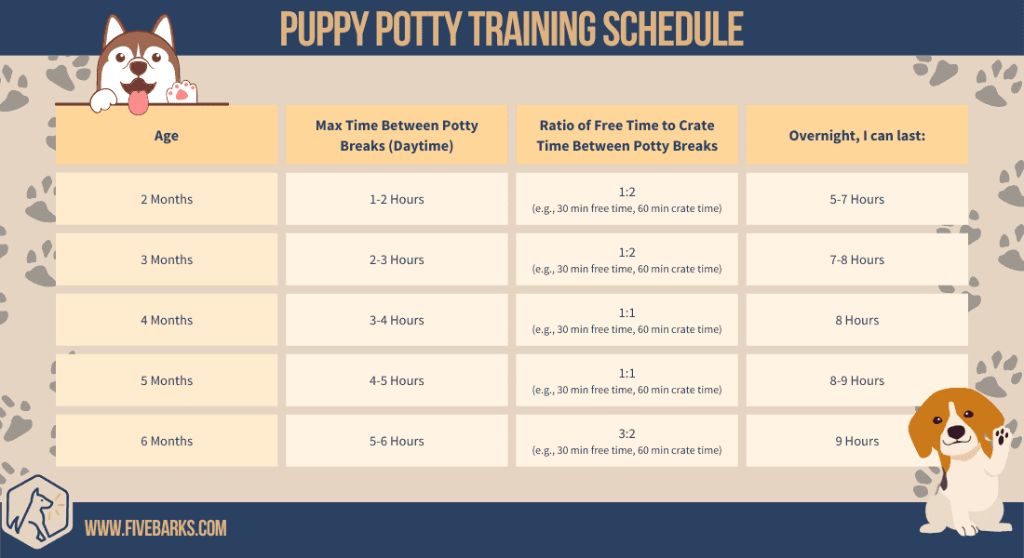
To be consistent:
- Take your puppy to their designated potty spot at the same times every day – first thing in the morning, after meals, after naps, and before bedtime.
- Use the same verbal cues like “Go potty” or “Do your business” whenever you take them to their potty spot.
- Reward successful potty trips with praise and treats.
- Confine your puppy or closely supervise them while indoors. This will help you notice potty signals and prevent accidents.
- Clean all accidents thoroughly with an enzymatic cleaner to remove odors that may attract your puppy to potty there again.
According to the AKC, sticking to a consistent routine makes potty training easier because it helps your puppy learn to hold it between potty breaks. Just remember that potty training takes time and consistency is key. If you stick to the schedule on weekends and weekdays, use the same verbal cues, and get everyone in the household on board, you’ll be well on your way to potty training success.
Use Positive Reinforcement
Positive reinforcement is very effective for potty training puppies and adult dogs. Whenever your dog goes potty in the designated spot outside, be sure to praise them enthusiastically and give treats immediately. Say things like “Good potty!” in an excited, happy voice and give your dog affection along with treats. This teaches the dog that going potty outside results in rewards and positive attention.
It’s important not to punish or scold your dog for accidents inside the house. This can actually set back potty training by making the dog afraid to go in front of you. Clean up indoor accidents thoroughly with an enzymatic cleaner to remove odors, then just ignore the behavior. Focus on praising outdoor potties instead. With consistency, your dog will learn that pottying outside is what earns rewards.
According to veterinary experts at VCA Animal Hospitals, “Positive reinforcement is the key to successful housetraining.” https://vcahospitals.com/know-your-pet/house-training-your-puppy
Clean Accidents Thoroughly
It’s important to properly clean any potty accidents to remove odors and stains. Using an enzymatic cleaner designed for pet messes is crucial for breaking down the enzymes in urine and feces that create lingering odors. Chemical cleaners may mask the smell temporarily but don’t neutralize it. Enzymatic cleaners work at the molecular level to completely eliminate odors. Be sure to let the cleaner sit for a few minutes before wiping it up.
When you find an accident, don’t yell at or punish your puppy. They won’t understand why you’re upset and it can setback potty training. Simply clean up the mess thoroughly with an enzymatic cleaner. The goal is to avoid having your puppy think that any spot is an acceptable potty area due to smells left behind.
Be Patient
Housebreaking takes time and consistency. Puppies don’t have full bladder control until 4-6 months old, so you need to expect accidents at first. With diligent training, most puppies can be potty trained by about 6 months old. However, it can take up to a year for a puppy to be fully house trained.
Don’t get frustrated if your puppy has frequent accidents at first or regresses after making progress. Consistency is key – stick to your routine, praise and reward your puppy for going potty outside, and clean up any accidents thoroughly. Over time, your puppy will get the hang of it.
Remember that every puppy is different. Some may pick up house training in a few weeks, while others may take several months. Be patient and focus on positive reinforcement. Eventually, with consistency, your puppy will be accident-free.
According to Purina, some puppies can learn in just a few weeks, while for some dogs it may take up to a year. Stay consistent and be patient – your puppy will get there.
Troubleshooting
If your puppy continues to have frequent accidents after initial potty training, there may be an underlying issue. According to The Labrador Site (https://www.thelabradorsite.com/15-puppy-potty-training-problems-solved/), medical conditions like urinary tract infections can affect a puppy’s ability to hold their bladder and bowels. It’s important to rule out health issues with your veterinarian first.
If your puppy is healthy, you may need to revisit and reinforce the training techniques. As Petfinder (https://www.petfinder.com/dogs-and-puppies/training/potty-and-house-train/potty-plan-what-to-do-if-your-potty-training-fails/) recommends, go back to basics with taking your puppy out more frequently and rewarding successes. Increase supervision again and be vigilant about interrupting accidents. Consistency and positive reinforcement are key to getting potty training back on track.

